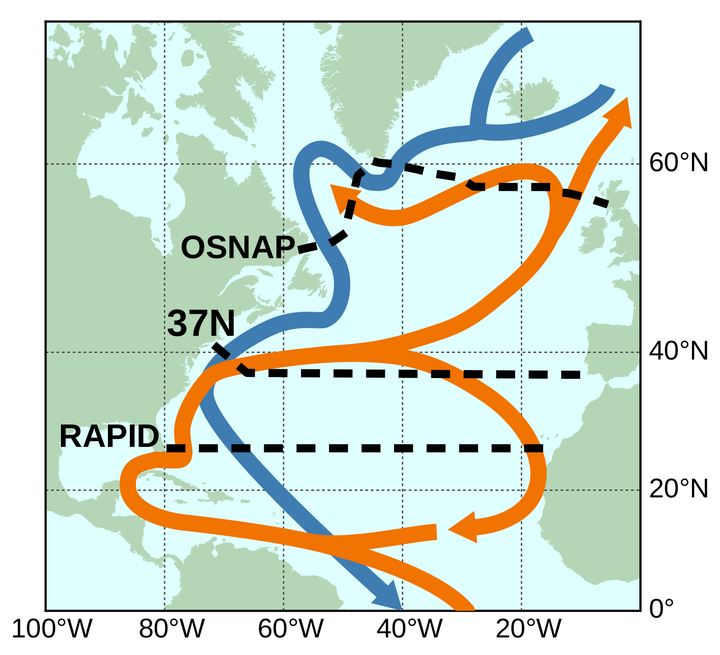AMOC connectivity

The Atlantic Meridional Overturning Circulation (AMOC) stabilizes the earth’s climate by redistributing heat, salt, oxygen, and carbon globally. The AMOC, in turn, is thought to be sensitive to changes in climate [IPCC 2014]. However, the link between the AMOC and climate hinges on the assumption of meridional coherence, i.e. that the overturning circulation transports climate anomalies thousands of kilometers across the Atlantic basin. Though meridional coherence has been reported in ocean models, observations of the AMOC are too limited to test the role of the overturning circulation in the climate system on interannual time scales.
To investigate AMOC connectivity from observations, we will compile a novel dataset at 37N. We plan to construct a decade-long (2004-2014), cross-basin dataset by combining complementary data types: satellite altimetry, gravity and wind stress data, in situ float observations, and the Line W western boundary moored array [Willis and Fu 2008, Toole et al. 2017]. The ECCO v4 and LLC270 state estimates will be used to complement our analysis and test our methods.
Our objectives are to use the 37N dataset to:
-
clarify the effect of subpolar density anomalies on the subtropical AMOC,
-
diagnose the gyre and overturning circulation contributions to subtropical heat divergence, and
-
investigate basin-wide AMOC coherence on interannual time scales during the satellite-era.
Ultimately, this work will clarify the role of the AMOC in the climate system. The 37N dataset will be particularly well suited to address these questions because the western boundary currents and deep ocean are directly measured, improving upon a satellite- and float-based AMOC dataset at 41N [Willis 2010]. The Willis [2010] 41N AMOC estimate does not include any observations below 2000m, has limited spatial and temporal resolution, and is situated just north of the subtropical gyre, which limits the scope of scientific questions it can be used to address.
The 37N dataset would provide the oceanographic community with a full-depth AMOC dataset that complements existing cross-basin arrays: OSNAP (Overturning in the Subpolar North Atlantic Program) at 57N, and RAPID (Rapid Climate Change) at 26.5N. This project will expand our understanding of the basin-wide character of the overturning circulation and its associated heat transport, as well as ground truth ocean models. Our methods for merging satellite and in situ observations may be applicable to other ocean regions, which would substantially increase the scope of the global overturning circulation observing system.
Funded by the National Aeronautics and Space Administration (NASA) Research Opportunities in Space and Earth Sciences (ROSES) Physical Oceanography program. Co-PI: Joshua Willis (JPL). Additional collaborators: Felix Landerer (JPL), Ian Fenty (JPL), and John Toole (WHOI).